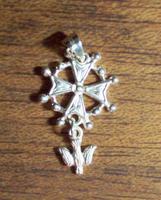England Visit
I just spent 10 days in England at a work conference. A great time of meeting coworkers from around the world. Our conference was south of London, on the seaside. We had meetings all day about finances, security issues, and learning more about the company we work for. All in all, a very encouraging and fun time, but very busy!
Then it was back to London to catch my plane, but I had a few days before my flight so I got to hang out with friends in London for the weekend. One thing that sticks in my mind is the large amount of security officers EVERYWHERE we went in London. As soon as I landed in the airport, I noticed huge guys carrying semi-automatic rifles with them and counted at least 3 bomb-sniffing dogs. Then as we walked around London's tourist sites, there were always police officers or security officials about. Which was nice for us because we always had someone to ask for directions! : ) It was a bit unnerving though, thinking that only a month ago the July 7th attacks had occured. There was one time I was walking down the street, heard a loud "bang", and then heard a siren just after that. My first thought was, "What now?!" and felt a bit of fear. But we did as the rest of the Londoners were doing, heads up, we just kept walking.
Some of my highlights of my time in England:
*eating Indian food (curry! yummy!)
*seeing Westminster Abby at sunset
*getting half price tickets to see the musical Les Miserables
*spending an afternoon at the beach (stones, not sand)
*shopping in second hand stores
*catching up with friends
*getting caught in a soaking rain with my coworkers as we hiked in the countryside ("It won't rain", famous last words!)
*seeing Picasso's "The Sunflowers" at the British National Gallery
*being taken on a "Biblical History Tour" at the British Museum (thanks Susie!)
*getting to use "the Queen's English". Torch=flashlight; Pants=underwear; Trousers=pants;
queue=lineup
Here's to more adventures to come! Cheers!

 I bought a small necklace charm (see picture), which is called the Huguenot cross. Below is a description of its symbolism.
I bought a small necklace charm (see picture), which is called the Huguenot cross. Below is a description of its symbolism.

